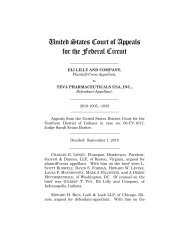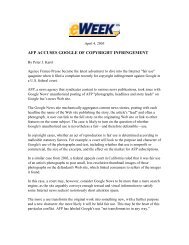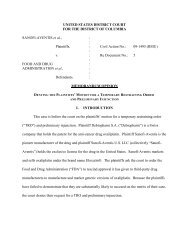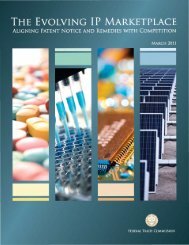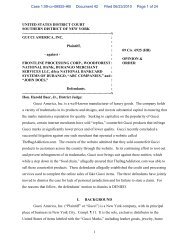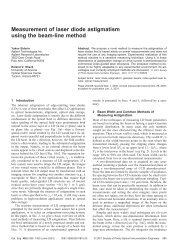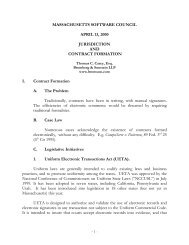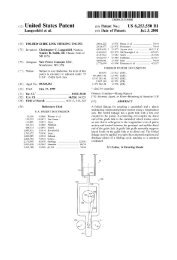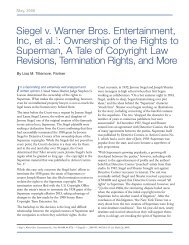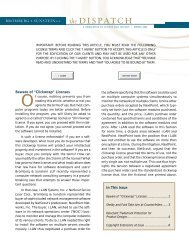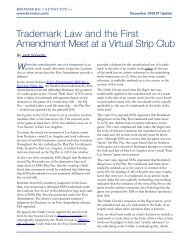Bard Peripheral Vascular, Inc. v. WL Gore
Bard Peripheral Vascular, Inc. v. WL Gore
Bard Peripheral Vascular, Inc. v. WL Gore
You also want an ePaper? Increase the reach of your titles
YUMPU automatically turns print PDFs into web optimized ePapers that Google loves.
27BARD PERIPHERAL v. <strong>WL</strong> GOREvascular structures during 1972 and1973”;(3) researchers were unable to invent asuccessful graft even after Volder andMatsumoto were published, and Coopertestified in 1975 that he was“compelled to steal Dr. Goldfarb’s histologyslides” to determine why otherswere not successful;(4) Goldfarb testified that neither Voldernor Matsumoto taught his invention,and Anderson testified that he wouldnot have been able to create a workinggraft based on Volder and Matsumoto;and(5) “pore size” and “internodal distance”are not synonymous based on severalpieces of record evidence, includingWilbert L. <strong>Gore</strong>’s, <strong>Gore</strong>’s founder, declarationthat “‘[p]ore size’ is not synonymouswith ‘fibril length’” in Volderand Cooper and Goldfarb’s agreement“that pore size bears no relationshipto fibril length” in the Interference.Obviousness II, 2009 <strong>WL</strong> 886515, at *4–5 (some internalquotation marks and citations omitted); see also ObviousnessI, 2008 <strong>WL</strong> 2954187, at *5.In light of Volder and Matsumoto in combination, thecourt also found, in addition to its above findings onVolder alone, that the following evidence at trial supportedthe legal conclusion that claims 20 to 27 are notobvious:(1) like Volder, Matsumoto was “repeatedlyconsidered by the PTO during the



